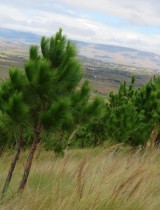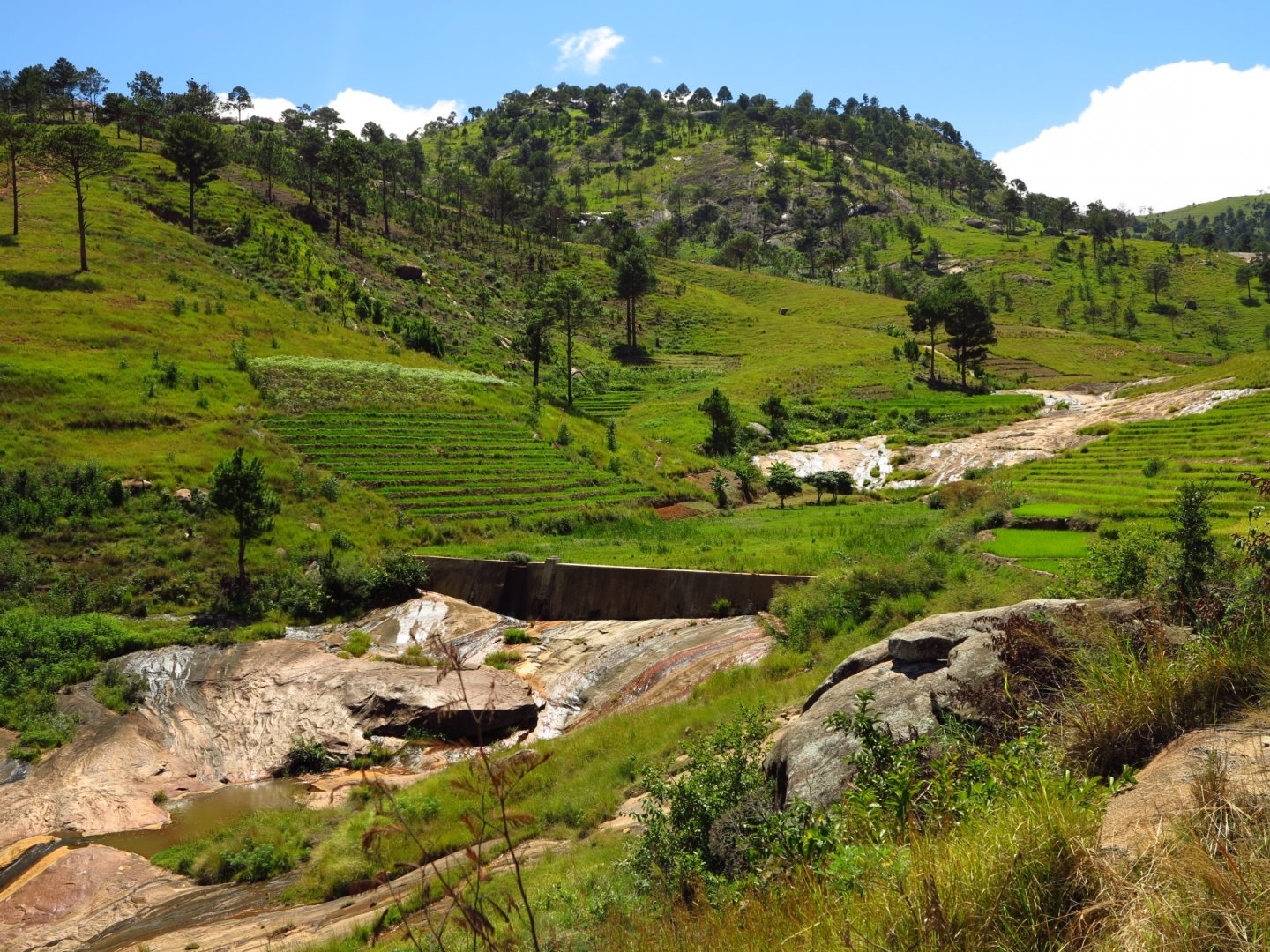

Modeling the impacts of planting exotic trees on the hydrology of the Soarano basin using the SPHY model
Interests and risks of fast growing species on water?
Within the framework of Nitidæ's support to the Eaurizon drinking water supply program managed by la Métropole du Grand Lyon and l’Agence de l’eau Rhône Méditerranée Corse within the Haute Matsiatra Region in Madagascar, reforestation is being carried out. At the request of local populations, fast-growing exotic species are frequently chosen for their rapid growth and their use as construction wood or energy wood. However, despite this advantage, the choice of these species can raise questions about their impact on biodiversity in the case of invasive species and on water resources. Indeed, their rapid growth lead to relatively high water requirements for transpiration. Thus, while these plantations limit runoff and improve water infiltration, they also lead to higher water withdrawal. An internship was carried out in 2020 to assess the potential impact of these plantations using a hydrological model.
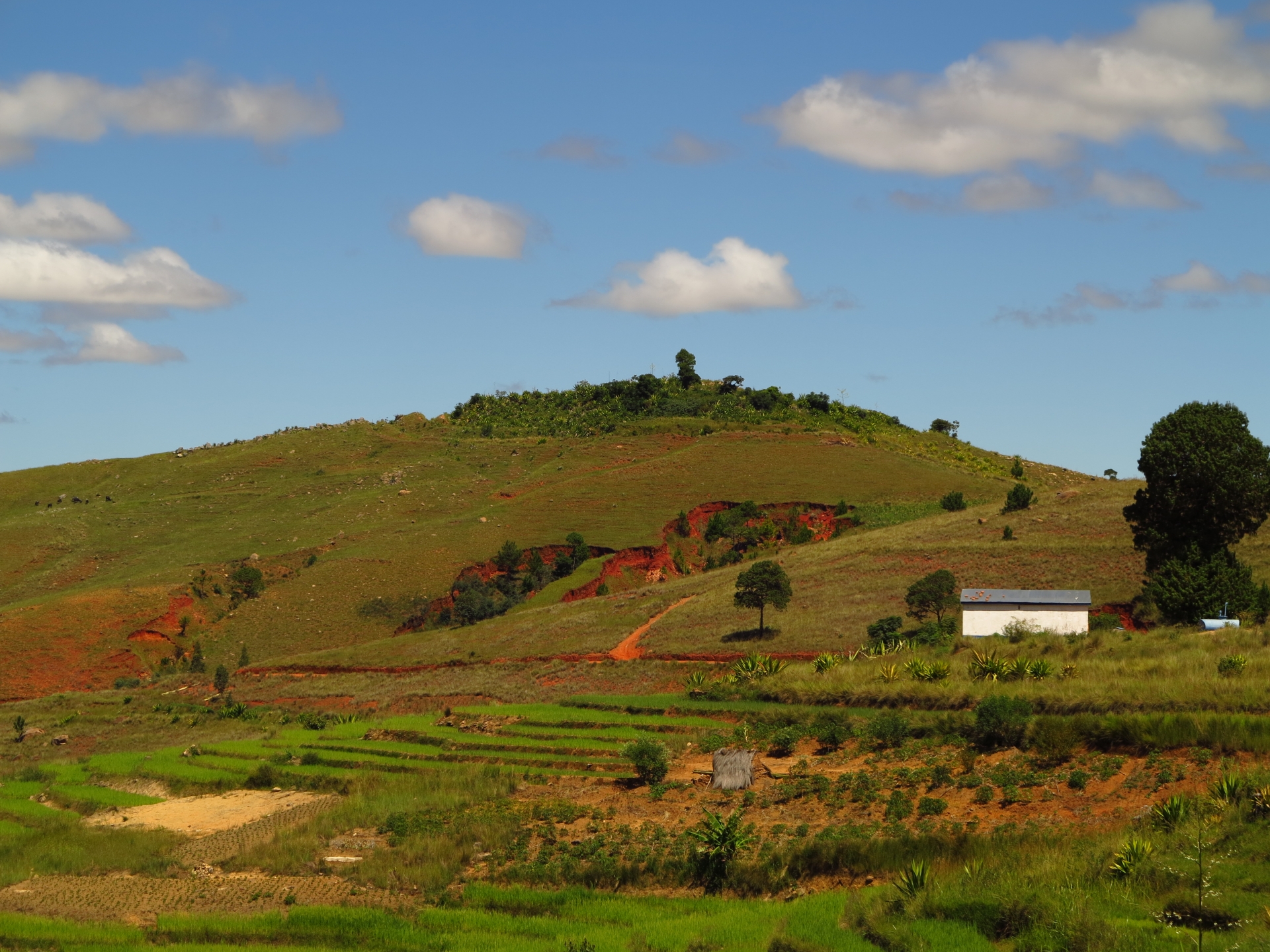
The SPHY model
Different scenarios for converting savannahs (10%, 30% or 50% of the savannahs) into plantations (Eucalyptus, Acacia, Pine or Citrus) or complete savannahisation were tested. The model used is SPHY (Spatial Processes in Hydrology model), mechanistic and spatially distributed, which integrates the main mechanisms of the hydrological balance (evapotranspiration, runoff, drainage, etc.) and takes into account the different water needs of the vegetation (use of a cultural coefficient Kc) and the depths of the roots.
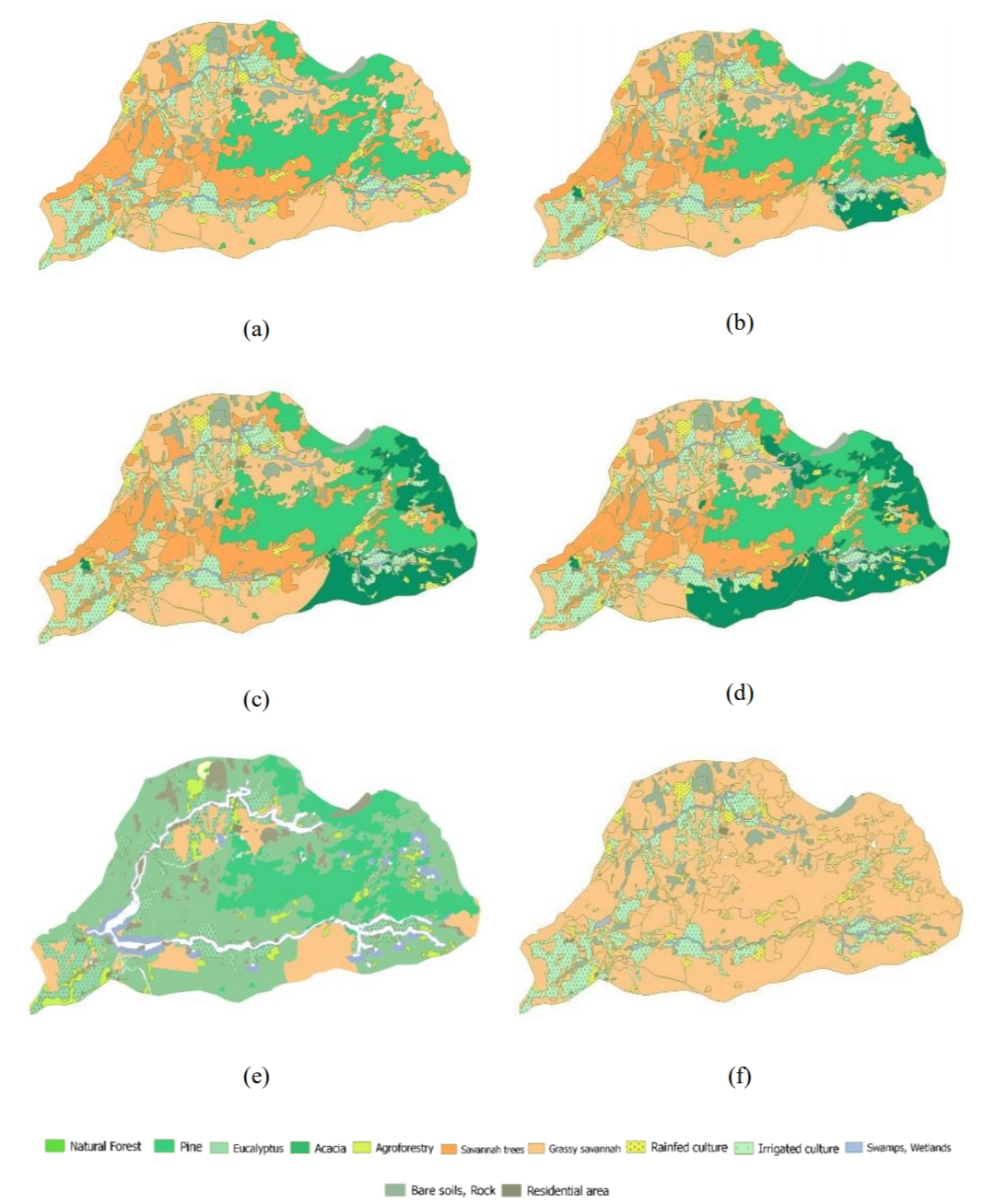
Land use scenarios: a) Reference, b) Tree planting at 10%, c) Tree planting at 30%, d) Tree planting at 50%, e) Future projection, f) Savanization
Increase in soil moisture and decrease in river flows
The results show that the quantity of water in the different soil layers increases with planting, all species combined, and decreases in the case of savannah. The impact on the decrease in runoff would outweigh the increase in water demand. On the other hand, this same impact leads to a decrease in the flow of the river at the outlet of the catchment area, which can reach a 30% decrease in flow in the case of a 50% Eucalyptus plantation. Comparison between species remains difficult, however, because the bibliography on input data (notably the cultural coefficient linked to transpiration and root depth) in the particular context of the study area is too limited and we do not have the field measurements necessary for an adapted calibration of the model.
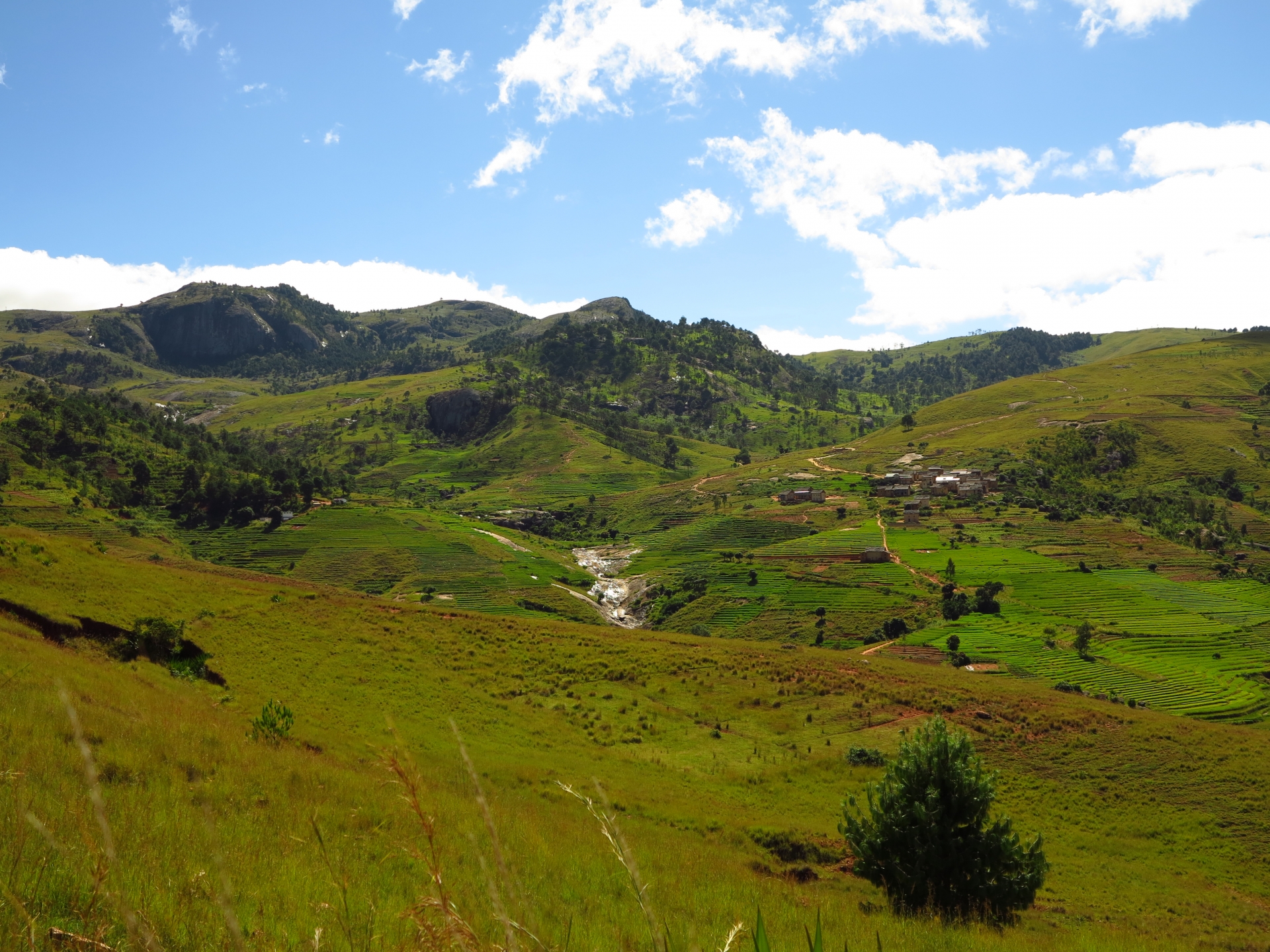
Positive impact but necessary caution
Nevertheless, this modelling exercise provides useful information on the impact of exotic plantations on water resources. The impact on the flow at the outlet underlines the importance of the location of plantations, particularly in relation to springs. Furthermore, the significant reduction in runoff shows the positive impacts in flood risk management, in reducing erosion and in water availability for non-irrigated crops.
>> Download the reports of this study at the bottom of the page
Related projects
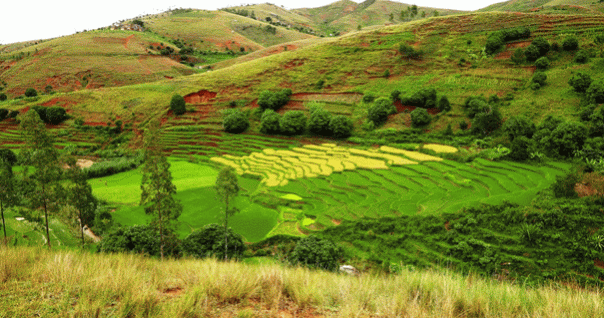
KOLORANO - Integrated Water Resource Management (IWRM) Program in Upper-Matsiatra, Madagascar
See moreRelated documents

Modeling the impacts of planting exotic trees on the hydrology of the Soarano basin using the SPHY model
